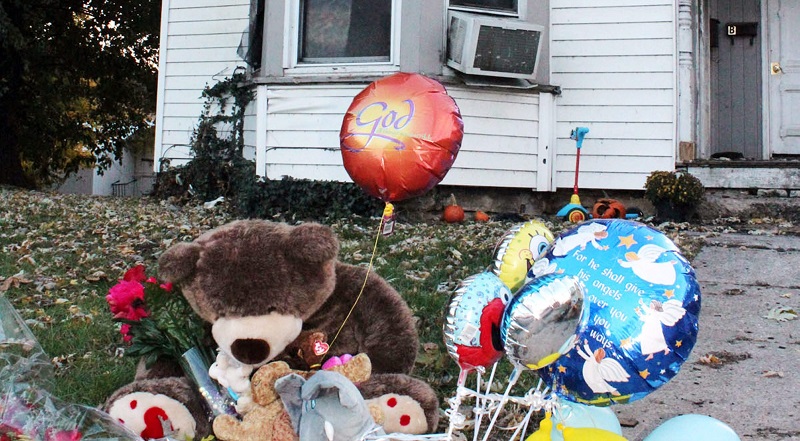

By Chief Joel F. Shults, Ed.D.
“Father tased trying to save 3 year old” was one variation of the national headlines that appeared in news reports across the country. This borrowed and often repeated headline didn’t tell the whole story, the real story, or the rest of the story.
The real story is of two small-town police department heroes. Two officers on a midnight shift and a few responders from the volunteer fire department raced to a report of a house fire with a child possibly still inside. The call sent Officer Will Harrison to the scene to find the home mostly engulfed in flames and a man and woman sitting on a nearby curb. Needing to get immediate information on whether there was a person still in the building or not, Harrison questioned the man but there was little response. Sgt. Jeff Salois arrived moments later, along with a small contingent of firefighters, and began to assist the volunteers in getting firehoses in place to try to dampen the raging fire.
Salois also unsuccessfully attempted to get information about the fire from the man standing near the street. “He looked at me, glared at me, then turned away”, Salois related. Once the firefighters had their equipment in place, the officers retreated to secure a perimeter. It was only after the firefighters were in place and actively attacking the blaze that the man charged the engulfed structure. Firefighters reported to the officers that the male was impeding efforts to fight the fire, screaming that they were trying to kill his kid.
Sgt. Salois moved to keep the male away from the house where firefighters were close to the house, now 90% engulfed in flames, with smoke pouring on to the porch where the male began to interfere with them. The fire chief ordered the officers to remove the man for interfering with them. Salois saw the man rip the facemask off a firefighter and striking a firefighter in the face with his knee when the firefighter attempted to move into the building from a low position. The male pushed Salois off the porch as Harris arrived. Salois was able to see only the lower part of Harris’ body through the billowing smoke and ordered Harris to deploy a taser on the male. He was handcuffed and continued to resist being placed into custody.
The first media report came from a regional television news report that police had tased a man attempting to save his child. Salois was assured by his city administration that no news release had been made even though the story implied that they were using official statements. In reality, the narrative came from family members of the couple living in the destroyed home. This is typical for a number of reasons. When a criminal investigation is ongoing, police are not able to make specific public statements about the incident. Attorneys fear that a statement may also be used in a civil suit, and also typically advise against a public statement before the completion of an investigation. Officers involved, or even tangential to the event, fear making a statement for those same reasons, and are not authorized to speak on behalf of their agency subject to department discipline.
With a news story that is expected to get attention, ratings, and web site clicks, reporters get information where they can. Sources can include social media posts, angry citizens, and blogs that are full of bias and misinformation. Writers can hedge on accuracy by saying that “it has been reported”, “unconfirmed reports state”, “citizens are asking why”, in order to use the unreliable information in a way that teases the issue but denies responsibility for accurate reporting.
The silence from those who could have spoken to the facts of the case made the officers feel abandoned. Worse was the fact that even other police officers made their own opinions based on the lazy and untrue media reports that failed to update the story when the officers were cleared of any wrongdoing. Sgt. Salois lamented “One of the things that really got to me was when the news story made it to (a police website), reading through the comments of officers who should know better and should understand that the information that they get when a story is pulled off the wire should be taken with a grain of salt.”
Harris admitted subsequent many months of unhealthy alcohol use after the incident. Salois sought helpful counseling after suffering self-destructive thoughts. The burden of the child’s death, even if unpreventable by the officers, as well as the guilt heaped upon them by unknowing professional colleagues, the feeling of abandonment and hostility (including death threats and being called a monster) the inability to pursue their own investigation of the suspicious death, and their forced silence were all ingredients faced by many officers in crisis situations.
This event is a cautionary tale for officers, police leaders, and citizens. Leaders must provide support and solid policies for dealing with controversy and crisis. Officers need to be empowered to advocate for themselves. Citizens need to remember not to believe everything they hear.